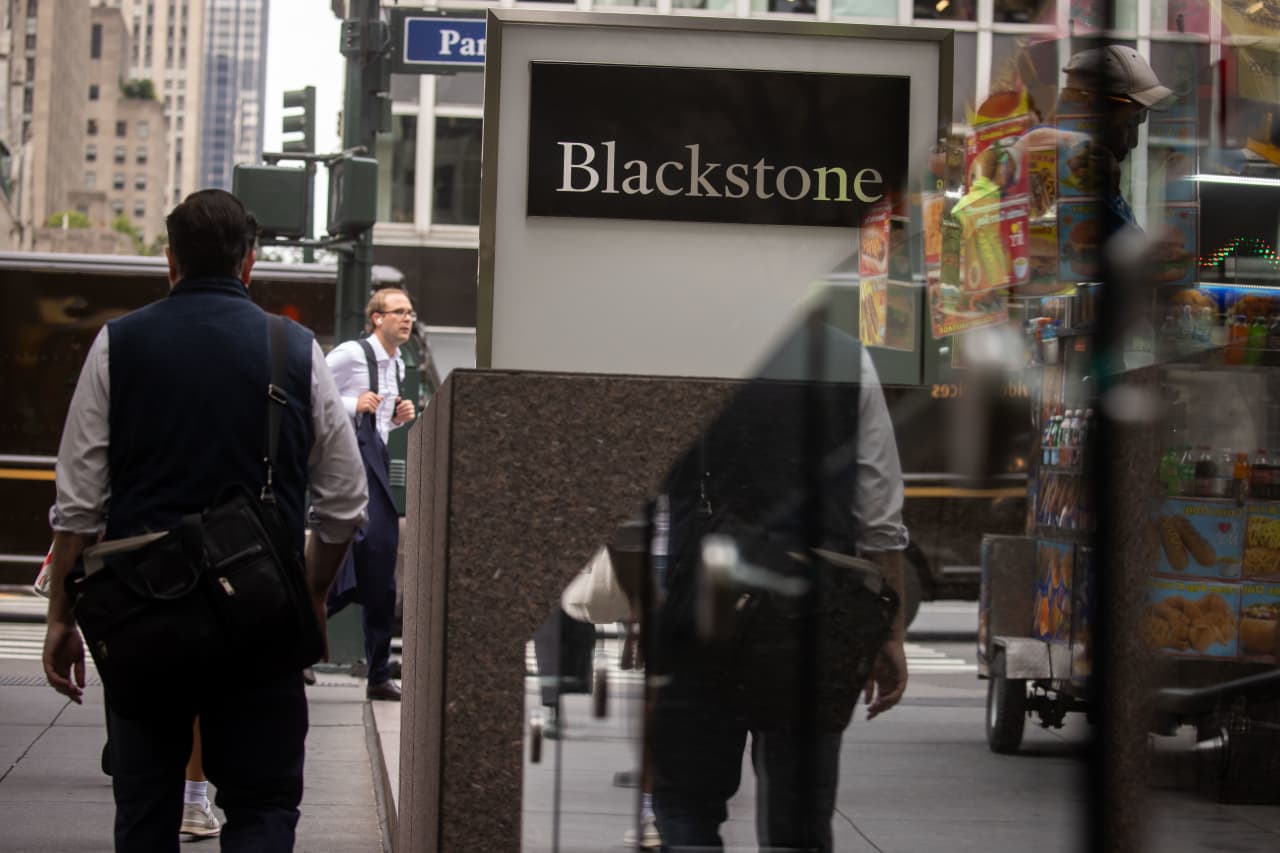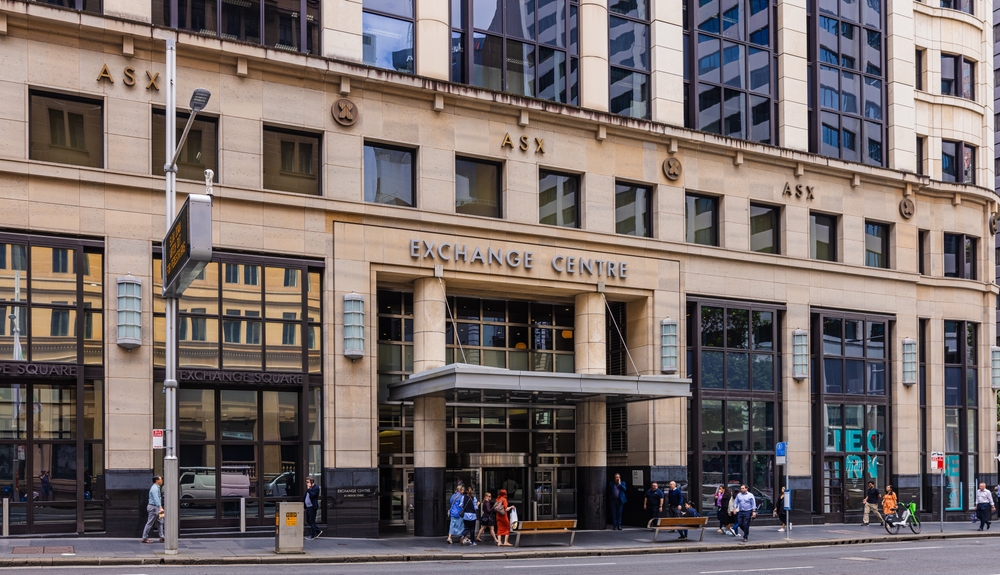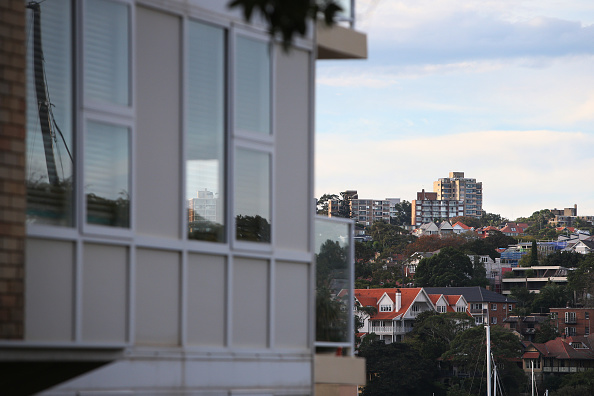Dasha Zhukova’s New Real Estate Venture
Ray, makes It ‘night at the museum’ every night.
The future of museum-going and cultural forays could be down in your own lobby, according to Dasha Zhukova, the arts patron and philanthropist who is launching a new residential real estate development firm in New York.
Ray, the name of Zhukova’s new brand, sets out to remedy a blind spot she sees in the residential world: the lack of arts and culture experiences in urban developments. Where other buildings and “co-living” spaces offer perks like golf simulators and dog grooming services, Ray’s buildings will offer cultural programming like master classes, events and workshops drawn from local institutions and artists to encourage creative synergy, says Zhukova, 39, with rents pegged at or below market rate.
One of the venture’s projects is reimagining Harlem’s three-story National Black Theatre, founded in 1968 by the late Barbara Ann Teer on the corner of 125th Street and Fifth Avenue, and is set to break ground by the end of May. A 21-storey building will take its place, with the new theatre space, retail and an event space spread across the first four floors, which Ray is developing with L+M Development Partners. The final structure will include 222 apartments, as well as artist studios, co-working spaces, communal kitchens, a library and a wellness space, and is slated to be completed in 2024.
Teer’s daughter, Sade Lythcott, now leads the theatre. “This project and partnership has felt [like] kismet from the time Dasha and I first met in 2019, not around aesthetics or Ray’s business model, but around our mothers. What it has meant to be women, raised by fearless matriarchs,” Lythcott wrote by email. “There is an incredible amount of equity created when you first start from a place that recognizes our shared humanity, honours what came before, in service of creating the built spaces of the future.”
Zhukova was inspired to launch Ray after seeing how visitors were drawn to the Garage Museum of Contemporary Art, the Moscow museum she co-founded in 2008. Its current home was designed by acclaimed architect Rem Koolhaas. “Even if [visitors] had seen all the shows that we had on, they would just stay and hang out in our lobby,” she says. “They would hang out in our cafe for hours on end—just come back day after day because they wanted to be in that environment.”
While hotels such as New York’s Gramercy Park Hotel have showcased art collections including names like Andy Warhol, Damien Hirst and Jean-Michel Basquiat, and developers have often staged high-end homes with trendy art to help sweeten the blue-chip price tags, one of Ray’s rental buildings will boast a permanent installation by Rashid Johnson, whose work just fetched a record US$1.95 million at Christie’s on May 11. Johnson will be creating a plant-filled installation for the lobby of a 110-unit building in Philadelphia’s rising Fishtown neighbourhood, which also will have six street-level artist studios, as well as maker spaces, and will be completed in 2022.
“Access to art shouldn’t be for a privileged few,” Johnson wrote by email. “These art and living spaces are aiming to bridge some of this gap, for me that’s exciting.”
The first two Ray ventures in Philadelphia and Harlem are largely financed by Zhukova. Ray recently inked a third deal, in Miami, where the site will expand beyond the 250-plus unit rental building that will anchor it, says Zhukova, with future plans for retail, offices, landscaped walkways and single- and multi-family homes.) With each project, Ray will emphasize new buildings rather than retrofitting existing space: “To truly rethink the space and how we occupy it…you really need to rebuild,” says Zhukova, who is looking to make inventive use of materials and space in part to make up for areas where Ray is spending more freely. “The focus [is] on how our habits have changed, the technological innovation and the cultural change.”
Her team at Ray currently eschews traditional titles—Zhukova calls her colleagues “thought partners”—and includes Will Kluczkowski, a real estate veteran from DDG; Becca Goldstein, a Stanford MBA whose CV includes a stint at a Brooklyn-based whisky distillery; and the design gallerist Suzanne Demisch.
“We are looking for creative solutions,” says Demisch, who says she enjoys the challenge posed by a limited budget. “We are asking why. There’s not a package for all the touchpoints of the experience—it’s about the aesthetic and the culture of each location.” Months were spent developing and perfecting the hand-split bricks for the facade of the Philadelphia project with manufacturers Glen-Gery and architecture firm Leong Leong—and finding the perfect Pantone swatch for the pinkish hue of the Harlem building facade, which is a nod to the historic Nigerian site the Osun-Osogbo Sacred Grove.
Such historic references were a priority of the architect of Ray’s Harlem project, Frida Escobedo, who is based in Mexico City. Art panels, inscriptions and a geometric, rhythmic facade that echo the motifs of the original National Black Theatre all refer to its previous incarnation, but “we’re also putting a great deal of focus on communal spaces, such as the artist studio and constellation of gathering areas,” says Escobedo, who is collaborating on the interiors with designer Little Wing Lee of Studio & Projects.
Zhukova, meanwhile, is partnering with Artspace, the Minneapolis-based nonprofit developer of art spaces, which will receive funding from the Ford Foundation in order to provide housing and studios at the Harlem building. She hopes to do the same in all Ray buildings. Her goal is to create accessible rents that will allow artists to remain in their home neighbourhoods rather than fleeing cities for more affordable live/work options. Zhukova next has her eye on rising cities including Austin, Nashville, Denver and Portland, Oregon, where she says they will focus on neighbourhoods that are a cultural fit for the brand.
“My personal dream is to build in Arizona,” says Zhukova. “I think in that climate and given the less restrictive building codes, you could build something absolutely incredible.”
Reprinted by permission of WSJ. Magazine. Copyright 2021 Dow Jones & Company. Inc. All Rights Reserved Worldwide. Original date of publication: May 14, 2021
 Copyright 2020, Dow Jones & Company, Inc. All Rights Reserved Worldwide. LEARN MORE
Copyright 2020, Dow Jones & Company, Inc. All Rights Reserved Worldwide. LEARN MORE
This stylish family home combines a classic palette and finishes with a flexible floorplan
Just 55 minutes from Sydney, make this your creative getaway located in the majestic Hawkesbury region.
As Paris makes its final preparations for the Olympic games, its residents are busy with their own—packing their suitcases, confirming their reservations, and getting out of town.
Worried about the hordes of crowds and overall chaos the Olympics could bring, Parisians are fleeing the city in droves and inundating resort cities around the country. Hotels and holiday rentals in some of France’s most popular vacation destinations—from the French Riviera in the south to the beaches of Normandy in the north—say they are expecting massive crowds this year in advance of the Olympics. The games will run from July 26-Aug. 1.
“It’s already a major holiday season for us, and beyond that, we have the Olympics,” says Stéphane Personeni, general manager of the Lily of the Valley hotel in Saint Tropez. “People began booking early this year.”
Personeni’s hotel typically has no issues filling its rooms each summer—by May of each year, the luxury hotel typically finds itself completely booked out for the months of July and August. But this year, the 53-room hotel began filling up for summer reservations in February.
“We told our regular guests that everything—hotels, apartments, villas—are going to be hard to find this summer,” Personeni says. His neighbours around Saint Tropez say they’re similarly booked up.
As of March, the online marketplace Gens de Confiance (“Trusted People”), saw a 50% increase in reservations from Parisians seeking vacation rentals outside the capital during the Olympics.
Already, August is a popular vacation time for the French. With a minimum of five weeks of vacation mandated by law, many decide to take the entire month off, renting out villas in beachside destinations for longer periods.
But beyond the typical August travel, the Olympics are having a real impact, says Bertille Marchal, a spokesperson for Gens de Confiance.
“We’ve seen nearly three times more reservations for the dates of the Olympics than the following two weeks,” Marchal says. “The increase is definitely linked to the Olympic Games.”

Getty Images
According to the site, the most sought-out vacation destinations are Morbihan and Loire-Atlantique, a seaside region in the northwest; le Var, a coastal area within the southeast of France along the Côte d’Azur; and the island of Corsica in the Mediterranean.
Meanwhile, the Olympics haven’t necessarily been a boon to foreign tourism in the country. Many tourists who might have otherwise come to France are avoiding it this year in favour of other European capitals. In Paris, demand for stays at high-end hotels has collapsed, with bookings down 50% in July compared to last year, according to UMIH Prestige, which represents hotels charging at least €800 ($865) a night for rooms.
Earlier this year, high-end restaurants and concierges said the Olympics might even be an opportunity to score a hard-get-seat at the city’s fine dining.
In the Occitanie region in southwest France, the overall number of reservations this summer hasn’t changed much from last year, says Vincent Gare, president of the regional tourism committee there.
“But looking further at the numbers, we do see an increase in the clientele coming from the Paris region,” Gare told Le Figaro, noting that the increase in reservations has fallen directly on the dates of the Olympic games.
Michel Barré, a retiree living in Paris’s Le Marais neighbourhood, is one of those opting for the beach rather than the opening ceremony. In January, he booked a stay in Normandy for two weeks.
“Even though it’s a major European capital, Paris is still a small city—it’s a massive effort to host all of these events,” Barré says. “The Olympics are going to be a mess.”
More than anything, he just wants some calm after an event-filled summer in Paris, which just before the Olympics experienced the drama of a snap election called by Macron.
“It’s been a hectic summer here,” he says.

AFP via Getty Images
Parisians—Barré included—feel that the city, by over-catering to its tourists, is driving out many residents.
Parts of the Seine—usually one of the most popular summertime hangout spots —have been closed off for weeks as the city installs bleachers and Olympics signage. In certain neighbourhoods, residents will need to scan a QR code with police to access their own apartments. And from the Olympics to Sept. 8, Paris is nearly doubling the price of transit tickets from €2.15 to €4 per ride.
The city’s clear willingness to capitalise on its tourists has motivated some residents to do the same. In March, the number of active Airbnb listings in Paris reached an all-time high as hosts rushed to list their apartments. Listings grew 40% from the same time last year, according to the company.
With their regular clients taking off, Parisian restaurants and merchants are complaining that business is down.
“Are there any Parisians left in Paris?” Alaine Fontaine, president of the restaurant industry association, told the radio station Franceinfo on Sunday. “For the last three weeks, there haven’t been any here.”
Still, for all the talk of those leaving, there are plenty who have decided to stick around.
Jay Swanson, an American expat and YouTuber, can’t imagine leaving during the Olympics—he secured his tickets to see ping pong and volleyball last year. He’s also less concerned about the crowds and road closures than others, having just put together a series of videos explaining how to navigate Paris during the games.
“It’s been 100 years since the Games came to Paris; when else will we get a chance to host the world like this?” Swanson says. “So many Parisians are leaving and tourism is down, so not only will it be quiet but the only people left will be here for a party.”
This stylish family home combines a classic palette and finishes with a flexible floorplan
Just 55 minutes from Sydney, make this your creative getaway located in the majestic Hawkesbury region.






















